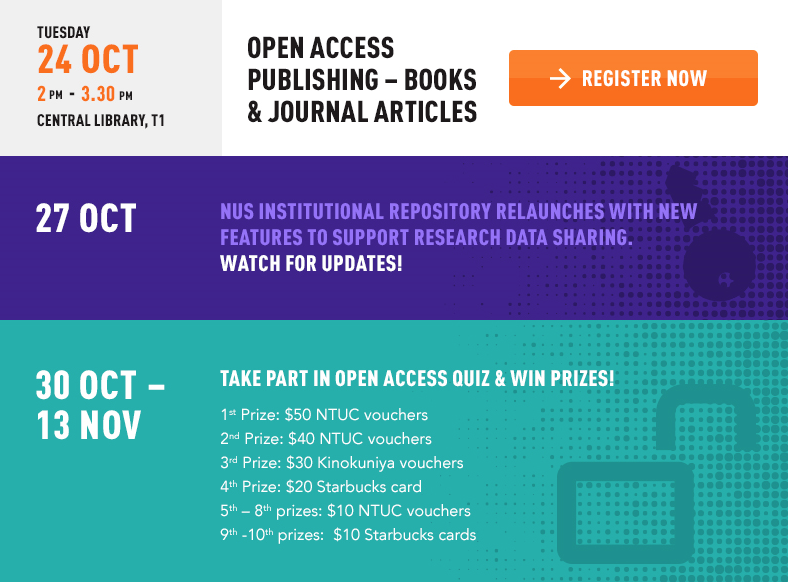1. What You Need to Know about Open Access
It’s Open Access Week and the theme is
This open-ended theme encourages you to fill in the blanks as you consider the benefits of being open. So what does open access mean?
Open-access (OA) literature is “digital, online, freely accessible, copyright compliance and free of most licensing restrictions” (Suber, 2012). Have you ever thought about what openness can mean for science and you? What are the benefits of making your research output open access?
Benefits of Open Access
There are two routes to open access:
- Gold open access – Articles are first published in OA journals/ hybrid journals and can be freely accessible to anyone without subscription. Authors have to bear the publishing cost.
- Green open access – Articles are first published in subscription based journals and depending on the self-archiving policies, a version (e.g. preprint) can be archived in an institutional repository like ScholarBank@NUS.
2. Open Access in Singapore
The Open Access movement is growing rapidly in Singapore.
Did you know that more and more funding agencies in Singapore have established policies and mandates for open access publishing which you may need to comply with? In other words, sometimes, your research funding depends on you making your works open access!
Did you also know that there are over 150,000 open access publications archived in the Institutional Repositories of A*STAR, National Institute of Education, Nanyang Technological University, National University of Singapore, and Singapore Management University? And we are expecting to have more!
3. Open Access in NUS
ScholarBank@NUS is the University’s Institutional Repository (IR). Its goals are to collect, preserve and showcase the research output of NUS researchers and departments and through this, increase the research visibility of our researchers’ works and demonstrate NUS’ research excellence to the world. Our collections include journal articles, book chapters, conference papers, audio-visual materials, patents, students’ theses and from the end of October, research datasets.
As of October 2017, ScholarBank@NUS has garnered over 14 million page views from all over the world.
Discover ScholarBank@NUS and how it opens science today.
What’s Happening at NUS Libraries








